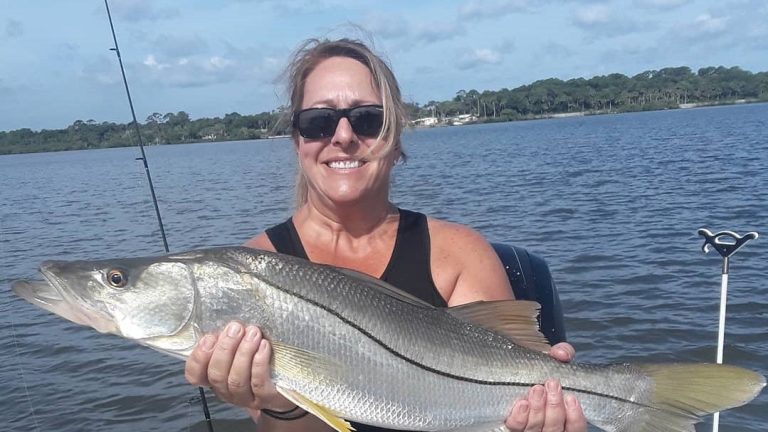
Good morning, here are a couple words you probably didn’t expect to see in a fishing roundup.
“Good Lord, I just want info on reds and pompano, not a report from the CDC!”
Hang with me here.
Cryptic mortality is the term fishery folks use when discussing the thousands upon thousands of deaths to fish that have been caught and released wrongly, either due to ignorance, accident or pure neglect.
And we bring this up at this particular time because beginning Thursday of this week, the beloved snook swam into its wintertime safe space of catch-and-release status, which might be better branded as catch-and-.
From the days of the first tight line and bent rod, proper release of fish has been the most underrated and underappreciated facet of angling. For you, worst-case scenario, it could be a tetanus shot or hook removal. For the fish, worst-case scenario is . . . do we have to use those two words again?
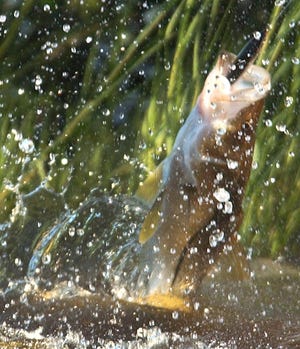
FLOUNDER TIMEFlspantty comes off the sidelines; wspannnspan know how to hook spann spanmspanzing dish? | FISHING REPORT
CHRISTMAS IDEASShopping for your fspanvorite spanngler? You might wspannt to reconsider
Snook are particularly in need of good care because they spend 4½ months a year off-limits to your filet knife — six weeks in winter, three months in the summer. Even those fish that thread the needle of a slot — 28-32 inches.
But also because they’re fierce fighters that often wear themselves out and need some TLC before heading back into their dog-eat-dog world — it’s a jungle down there, folks, constantly looking for a meal while, simultaneously, trying not to become one.
First, protect yourself: Avoid the snook’s gill plates, which are so sharp they should come with a Gillette logo.
Second, a reminder from Capt. Obvious: If a snook, or any fish for that matter, has swallowed the hook, don’t gouge around in there like a medieval field surgeon; cut the line. The fish has a much better chance at survival that way.
Now, some important particulars.
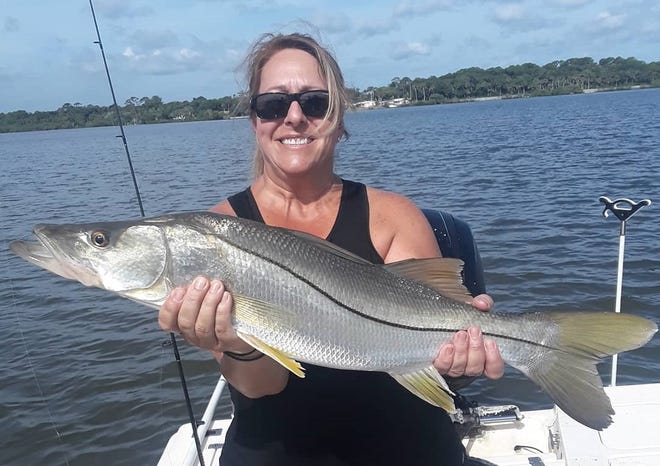
“Use a rubber net. Frabill makes a good one,” says local tournament angler and guide, Capt. Billy Pettigrew. “This helps the fish keep its slime coat.”
Also, to help maintain that important, bacteria-fighting slime, wet your hand(s) if you’re going to be handling the striped beauty.
Next, Capt. Billy tells us, “Depending on the size of the fish, you can just belly it by placing your hand just behind the pectoral fins on the front of the belly and the other at the back of the belly.”
The book on snook says this has a remarkable calming effect, compared to the flipping and flopping you get if you try to hold them vertically from the mouth . . .
. . . Which you should NOT do!
The bigger the fish, the bigger the chance you will break its jaw. Fish aren’t anatomically designed to be held vertically. Along with jawbone issues, you can do damage to a skeletal system that’s not built to keep fish innards in their proper place.
Capt. Billy is among those not fond of using a vise-like fish grip in a snook’s mouth. “There’s a membrane that can be punctured inside the mouth,” he says.
You’ve landed your snook, perhaps snapped a picture to show the boys at the dock. Now comes the all important release/revive, which occasionally involves some thumb-sucking. That’s right.
“Place the fish in the water with its head facing the oncoming current, with your thumb in its mouth,” Capt. Billy says. “The fish will either take off right away or will suck on your thumb until it’s ready.”
True story.
“Once it’s ready, it’ll open its mouth, shake its head and swim off. Grab your rod and make another cast.”
As a bonus, you’ll feel better about yourself.
Halifax/Indian River
Craig Patterson (Donald’s Bait Shop in Port Orange) hears the commercial bait folks struck fiddler-crab gold over in Florida’s Big Bend area, just in time for temps to cool and light a fire under the sheepshead, which have been in feed mode recently.
“They’ve been caught in good numbers the last couple weeks and we anticipate that trend will continue,” Craig says. “The optimum water temps are ushering in some of the year’s best fishing.”
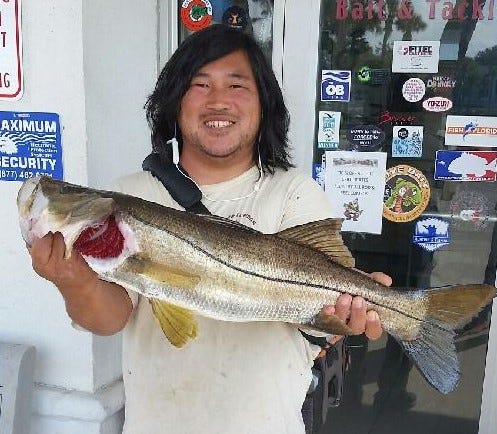
Trout are buzzing a bit, but remember, they remain catch-and-release until Jan. 1, and redfish are off-limits in the Indian River anywhere south of the South Causeway in New Smyrna Beach.
Capt. Barry Englehardt does a lot of his work in the Tomoka River and Basin. And right now he says he’s finding flounder with the help of mud minnows and finger mullet.
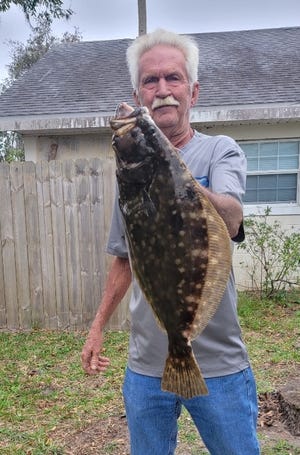
“For artificials, use a Z-Man three-inch paddle tail,” he recommends.
He’s also targeting sheepshead around the pilings with peeled shrimp, which don’t work as well as fiddlers but will do.
Capt. Jeff Patterson says bluefish are all over the place in the intracoastal, while black drum are joining the sheepshead at some bridges. But the most fun he’s had recently was up in the Tomoka.
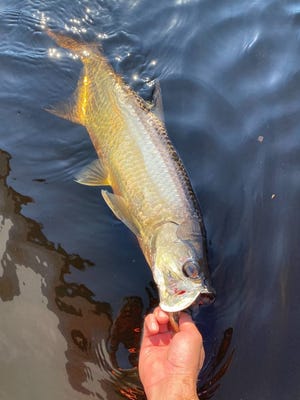
“I found a really big school of juvenile tarpon at the end of last week,” he says. “That was a blast. We had the best luck using small diving plugs for them.”
Surf
Without the usual numbers of anglers lining the tide line, much of the usual chatter has been muted, but the pompano are coming through on their seasonal travels south.
“Knuckled and live blue crab, along with salted clam, shrimp and fishbites are helping to fill coolers,” says Craig Patterson.
Gene Lytwyn (The Fishin’ Hole, Daytona Beach) is also getting reports of whiting and blues to go along with those pompano.
Offshore
It’s been tough sledding for several days and will only get slightly better over the weekend.
“Only a few boats have been able to get out, but they’ve been catching sailfish, wahoo, mahi, and blackfin tuna,” says Cody Moore (New Smyrna Outfitters).
The Sea Spirit, our area’s only remaining head-boat, isn’t one of those that has gotten out there. Due to the seemingly endless string of miserable forecasts, it’s been held hostage at the Ponce Inlet docks since last Wednesday.
Flagler County
Sheepshead and black drum are getting the treatment at Matanzas Inlet for those who can best deal with the rushing current. Pompano, whiting and blues from the bridge to the east, says Capt. Mike Vickers (Hammock Beach Bait & Tackle).
Sheepshead are also filtering into the ICW, he adds. He also says a few reds have been sprinkled into the surf catch around Palm Coast and Flagler Beach.
St. Johns
“Not to sound like a broken record, but we’re catching specks!” says Capt. Bryn Adams, whose Highland Park Fish Camp in DeLand remains a rare go-get-’em spot on the St. Johns, where most public boat ramps remain closed and idle-speed limits blanket the main river.
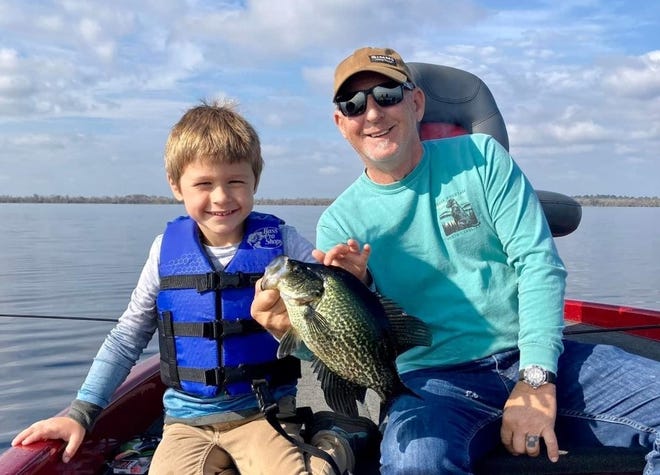
But from Highland Park, you can quickly get to Lake Woodruff and, to hear the talk, get your limit of speckled perch — unless you prefer to call them crappie.
“It’s really a good year. With the high water levels and weather cooling down, now is the time to go,” Capt. Bryn says. “We’re still seeing limits of fish coming in (25 per day, by the way). Trolling open water with artificial jigs on Lake Woodruff is the best method. Not all of them are trophy size, but you’ll have no trouble getting some for dinner.”
Hook, line and clicker: Send us your fish pics
We want to see your most recent catch. Email your fish photos to [email protected].
Please include first and last name of angler(s), as well as type of fish (we’re occasionally stumped). All are included with our online fishing report, and some occasionally make the print edition.
Do I need a fishing license?
You can find all the license info, including exemptions, on Florida’s Fish and Wildlife Commission website: MyFWC.com. But the basics are:
No: If you’re 65 or older, 15 or younger, you don’t need a license.
No: If you’re fishing with a licensed guide or charter boat, both of which purchase commercial licenses that cover their customers.
Yes: Most everyone else, including visitors from other states.
Yes: Even if you’re a shore-based angler (shoreline, dock, pier, bridge, etc.). However: The shore-based license is free . . . But: You still need to register for that free license.
Where do I get a license and what does it cost?
Many bait shops sell licenses, as do the bigger retailers (Bass, Dick’s, Walmart, etc.).
Florida’s FWC uses a third-party site for buying or renewing fishing licenses: GoOutdoorsFlorida.com.
The cost: $17 for an annual license.
Don’t forget: Whether you’re fishing fresh or saltwater, you need the specific license. Freshwater and saltwater licenses are both $17 annually.
I’m here on vacation, do I need a license?
Yes you do, and they’re also available at GoOutdoorsFlorida.com or certain bait shops and big retailers.
Cost: $17 for three days, $30 for seven days, $47 for a year.Also: Non-residents need to purchase that license even if they’re just fishing from shoreline or shore-based structures. (Florida residents need that license, too, but they’re free.)